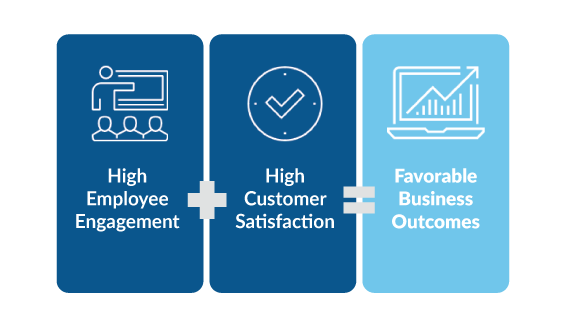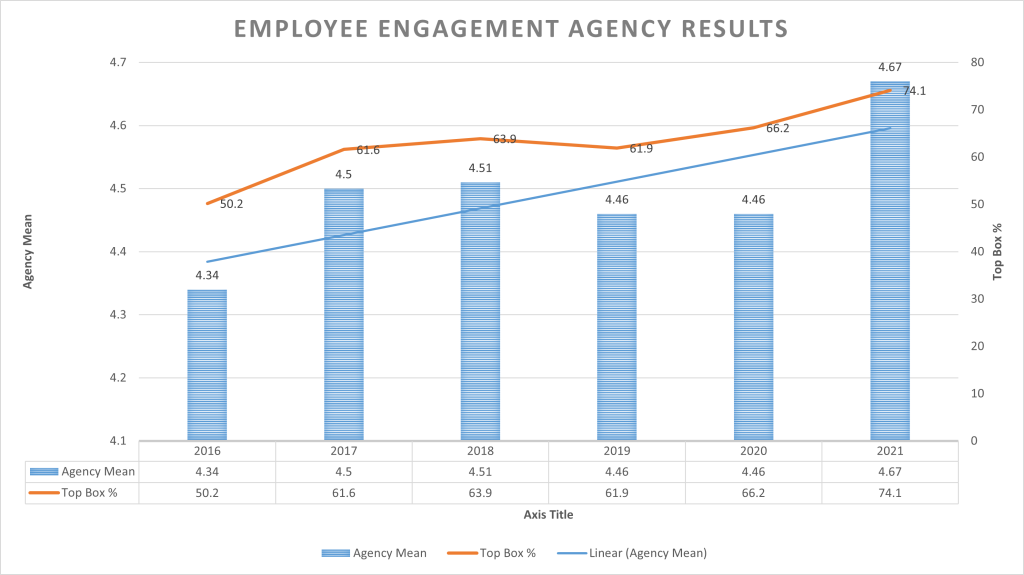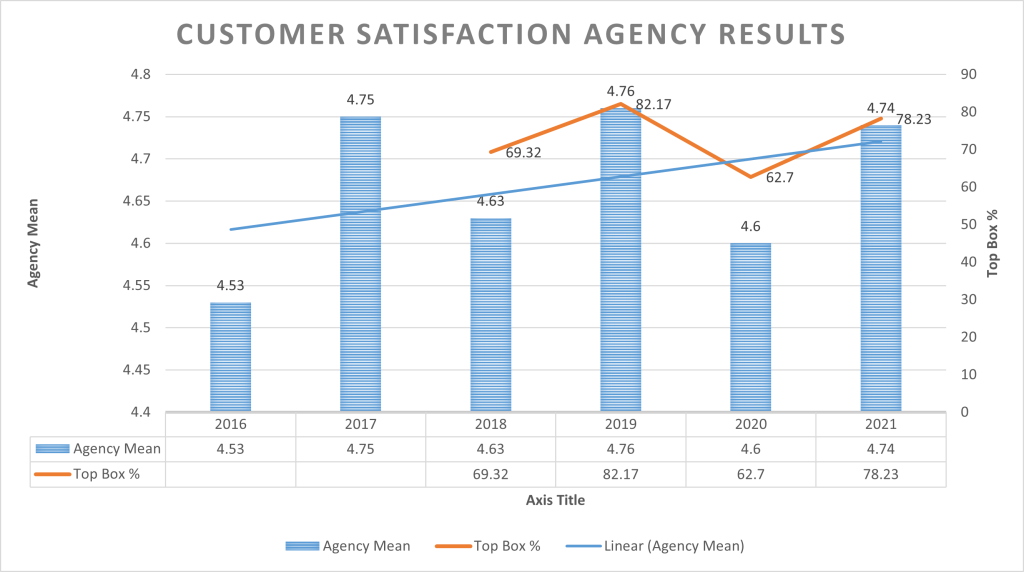
Creating a Culture of Unmistakable Value at Northwestern Illinois Association
Sustainable business partnerships are symbiotic in that each partner gives and receives something of perceived value to the other. When one perceives a decrease in the value of what they are receiving from the partnership, they may replace the partnership with one they believe to be more valuable. With this dynamic in mind, Northwestern Illinois Association embarked on a new journey to increase its value. These are the steps they took to create a culture of “unmistakable value”.
Summary
- NIA leaders realized they needed to create an unmistakable value for their partner districts to ensure retention in a competitive environment.
- NIA worked with Studer Education to diagnose, gather feedback and develop plans for leader accountability and improvement.
- In the first six years of implementation, NIA has experienced a significant increase in both employee engagement and customer satisfaction.
Challenge
In the summer of 2015, Jon Malone was hired to lead a special education cooperative called Northwestern Illinois Association (NIA). Since the early 1970s, the cooperative had been providing special education services to approximately 60 school districts, spanning the 10 most northwestern counties of the state. Because NIA was a cooperative and not a traditional school district, the organization needed to be invited to the table to stay relevant. They didn’t have the luxury of being characterized as a necessity. Although NIA was regionally understood to be an effective education partner, as a new leader, Malone was looking for ways to demonstrate unmistakable value to NIA’s customers.
Approach
1. Diagnosis: Finding a Place to Start
At the time, Malone’s working hypothesis was that if NIA leaders gave high-quality quality service to their team, individual teammates would be better positioned to delight their partners. Although he was committed to helping his team create unmistakable value, he wasn’t sure how to make it happen or even where to start. In order to find a path forward, he worked with a Studer Education coach to find a diagnostic tool that would provide NIA leaders with usable information about the current state of the organization.
In the fall of 2015, all NIA leaders and board members participated in the Straight-A Leadership Assessment (SALA). The 16-item assessment was developed by Quint Studer and described in detail in his book, Straight A Leadership. The assessment was designed based on success factors identified in a research study completed by the Alliance for Health Care Research and the work of John Kotter, A Sense of Urgency.
The SALA is designed to diagnose alignment, readiness for change, fundamentals, self-awareness, consistency, and accountability of an organization based on the perceptions of leader groups within the organization. The survey data helped NIA establish the following areas as the greatest opportunities for improvement:
- Focus on strategic direction and improving the organization
- Communication
- Employee engagement/Buy In
- Leader Consistency
2. Communicate the Case for Excellence
Armed with new information about the agency, Malone began laying the foundation for culture change with leaders first. The fact that the organization’s customers have the option to choose service providers other than NIA was not something most of their teammates contemplated regularly, and Malone wanted to ensure all teammates would eventually make this connection.
To create a sense of urgency for change, NIA leaders began to communicate regularly and transparently about the precarious nature of their business reality. They asked teammates to contemplate the following key questions:
- If NIA continues to function in the future as it does today, are we likely to maintain our current partnerships?
- If we believe our services are high-quality but our partners don’t know or agree, will we be invited back to serve in the future?
- Is it enough for NIA teammates to be skilled at special education work or must they be effective customer service agents?
As leaders cascaded this conversation through the agency, teammates began to develop consensus around the upside of providing excellent customer service and creating additional value by continuously improving processes.
During the summer of 2016, NIA leaders developed a plan to track and measure employee engagement and customer satisfaction on a regular basis.

The plan was to administer relatively short employee engagement and customer satisfaction surveys in the second and fourth quarters of each year. The leadership team committed to using the time between the surveys to improve practices. They hypothesized that this ongoing cycle of value creation would help strengthen the biannual engagement and satisfaction metrics.
In collaboration with Studer Education, Malone designed quarterly Leader Development Institutes (LDIs) for NIA leaders. They hosted leaders for one full day each quarter. Mornings were used to explore the science and philosophy behind evidence-based strategies for improving employee engagement. Afternoons were dedicated to learning about and practicing cyclical process improvement.
System of Mandatory Strategic Actions |
|
| Engagement Strategy | Why Do We Do This? |
| Employee Engagement Survey | To determine how well NIA leaders are supporting and engaging their direct reports |
| Customer Satisfaction Survey | To determine how the customers perceive our service delivery over time |
| Rounding with Teammates | To gather input from those closest to the work to improve processes
To reward and recognize good work across the agency |
| 30/90 Day New Teammate Rounding | To gather input from new teammates to identify key gaps in support and to recruit new talent |
| Results Roll Out Discussion and 180-Day Action Plan | To communicate results transparently to all teammates
To gather input on what leaders are doing well To gather input on what leaders can do differently to better support teammates |
| Thank You Notes, Emails, and other Recognition Systems | To positively reinforce good work across the agency using reward and recognition |
4. Manage Real and Perceived Barriers to Increase Leader Buy-In
Building buy-in and getting initial traction on deploying strategies was an early challenge for the NIA leadership team. They were only able to meet a few times a year and were deploying strategies across such a wide geographic area with teammates who weren’t used to giving so much input. During the first few LDIs, NIA leaders expressed different levels of buy-in. A few leaders felt there was a lack of need for altering their practice and a few others felt that time was a crippling blocker. “We already do this” and “We don’t have time.”
In response to this resistance, the next few LDIs focused on reinforcing the value of systems thinking. The team wanted leaders to understand that strategies used on an ad-hoc basis become even more powerful when incorporated into a system of aligned leader behaviors that span the entire agency. Leaders learned the Pareto Principle (the 80/20 rule). This principle states that high-performing leaders take inventory of the ways they use time and refocus their efforts on a smaller number of strategies that are reasonably calculated to prove the most impact.
Spending time with both of these principles helped NIA overcome gaps in leader buy-in. They acknowledged that finding time to implement new strategies is a heavy lift and found solace in being part of a team with a reasonable plan for being successful in the future.
5. Design Scorecard Evaluations to Align Leader Behavior
As the leader of NIA, Malone asked the Executive Board to base his evaluation rating on the organization’s annual employee engagement and customer satisfaction results. After some discussion, the board agreed and shortly afterward Malone informed his leaders that their evaluation ratings would also be based on survey results. They used the summer of 2016 to develop Leader Scorecard Evaluations using data from the employee engagement and customer satisfaction surveys to set growth targets. They also developed a reasonable system for assigning ratings based on numeric results.
The NIA survey process was cleverly designed to isolate results and feedback for individual leaders and each customer service department. This system allowed the team to understand how individual leader results contribute to the overall team results and how each department contributes to overall customer satisfaction. Malone believes that tying scorecard results to evaluation results was a critical driver of early momentum. A disconnected scorecard is mostly a symbolic gesture. A scorecard evaluation that assigns ratings based on achieving specific team outcomes rewards individuals for strategically aligning their behavior to achieve team goals. When evaluation ratings are not based on a team result, individual teammates make their own decisions about what is best for the team.
Nearly all NIA leaders followed Malone’s lead and openly accepted accountability for the team result, committing to using the new systems and strategies according to the cascaded plan. This is a stumbling block for many organizations because people in leadership positions often lack the courage required to accept accountability for results that are not guaranteed.
6. Review Survey Data and Other Outcomes
The data tables below include six years of employee engagement and customer satisfaction data. The survey results included are high-level, agency mean data from the annual spring administration of each survey.


Outcomes
After six years of implementation, NIA leaders remain fully invested in the Scorecard Evaluation Plan. Although the work is imperfect, leaders consistently implement an aligned system of evidence-based leadership strategies. Leaders at NIA express a deep sense of the value they bring to their work. All NIA leaders, Malone included, report increased confidence in their ability to lead teams successfully, and many insist they would continue to use these systems and strategies even if they were not required.
NIA teammates took particular pride in customer satisfaction results, which helped to secure their partnership in the pursuit of excellence and their commitment to creating “unmistakable value” for customers. Shortly after the first round of Results Rollout discussions, the early adopters among them began to outwardly express unsolicited appreciation for the way they were being led.
A significant portion of NIA’s district partners regularly share their perceptions of service by completing the satisfaction surveys twice annually. In return, NIA regularly shares the results with customers. The team has developed a system for regularly engaging individual customers to gather feedback that can be used to improve service. NIA partners occasionally express appreciation for these efforts, and their repeat business is affirming. Some customers have even asked NIA to teach them the same systems.
Momentum continues to build as NIA celebrates team wins and thanks teammates for the work to achieve them. With each cycle, employees become more skilled users of NIA’s own improvement systems. Leaders are more skilled in helping teammates function at higher levels. Teammates are better able to identify improvements close to the work that will best improve results.
Prioritizing a team result for six years has encouraged the team to do work that might not have been done otherwise. Of particular note is the extensive work the team did to create consistent standards of expected behavior for all NIA teammates. They took two years to engage all teammates, in a grass-roots approach, to develop a group of standard expectations aligned to the team’s core values and strategically selected to help maximize the performance of the team.
KEY TAKEAWAYS
To create a culture of unmistakable value, leaders must:
Think differently.
Place leadership at the foundation of improvements needed to drive service excellence, relying on honest feedback from employees and customers to make decisions.
Plan differently.
Gather data and feedback early and often, using that data to determine actions for improvement.
Act differently.
Share survey results transparently, and create accountability by enlisting leaders in creating action plans to create a service-oriented mindset.
-
Casey Blochowiak Vice President of Coaching
-
KK Owen Leader Coach





